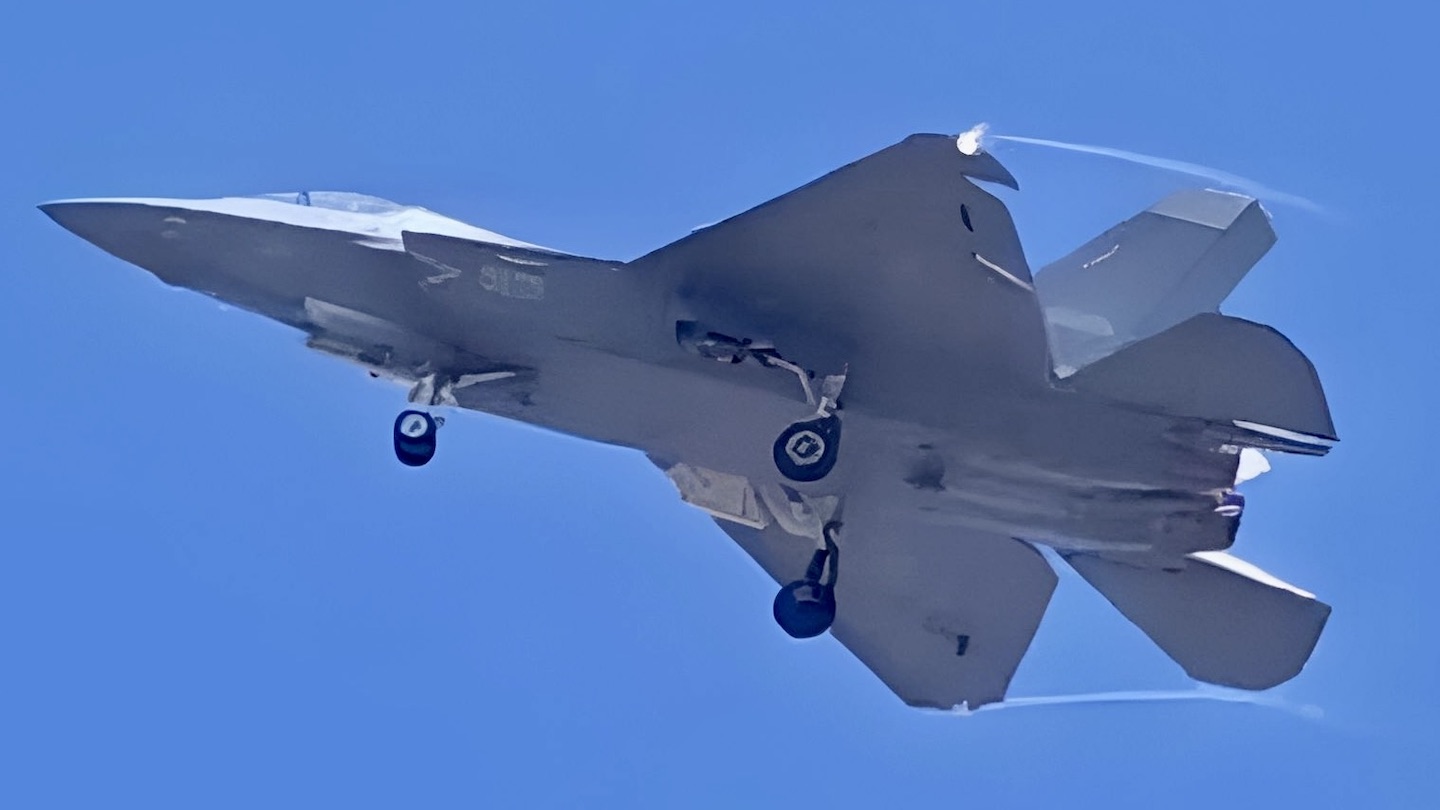Recent imagery shows what could be the third flying prototype of China’s carrier-based Shenyang J-35 stealth fighter. The new visuals, which depict the aircraft from its underside, come after growing indications that the J-35 might eventually operate from China’s two in-service carriers, Type 001 Liaoning and Type 002 Shandong, as well as future carriers fitted with catapults and arrestor gear, including the soon to set sail Type 003 Fujian.
The images were originally posted to the Chinese Weibo microblogging website earlier in March before being shared more widely. While the precise date they were taken remains murky, it has been indicated by Hui Tong on the Chinese Military Aviation blog that the aircraft was pictured as it approached the Shenyang Aircraft Corporation in Liaoning after a test flight. That same blog posits that this could be the third J-35, although we cannot confirm that at this time.
The images give us a view of the bottom of the J-35. We know from previous photos that the overall skin of the J-35 is quite smooth for low observable requirements. The rear of the aircraft shows largely standard exhaust nozzles — although we know the J-35 has serrated petals on its nozzles, although the enhanced image at the top of this post appears to have smoothed them out. The jet appears to be wearing a ventral bolt-on Luneburg lens (radar reflector) as is customary on stealth fighter aircraft when low-observability is not needed and can also be a challenge for flying in dense airspace. The style and placement look similar to the one found on the F-22 and, subsequently, the J-20. The J-35’s landing gear features a twin nose wheel for carrier operations and a similar general layout as the F-35C.

A navalized variant of the land-based Shenyang FC-31, the first flying J-35 prototype made its initial flight, at least that we know of, in October 2021, sporting a blue-green primer finish and wearing the serial 350001. The second known flying J-35 prototype, 350003, was subsequently spotted in July of 2022 with a low-visability gray tactical paint job. There was speculation that a third was pictured in flight in September 2023, although, as we noted at the time, the quality of the imagery made it difficult to ascertain whether the aircraft was indeed a navalized J-35 or a land-based FC-31 variant.
Of course, the emergence of the J-35 had long been considered closely linked with the People’s Liberation Army Navy’s (PLAN) future catapult-assisted takeoff but arrested recovery (CATOBAR) carriers.
For a time, it was widely assumed that China would stick with operating J-15 fighters from Liaoning and Shandong, which are both equipped for short takeoff but arrested recovery (STOBAR) operations. More capable future CATOBAR carriers such as Fujian would subsequently feature air wings that include J-35s and CATOBAR versions of the J-15, among other aircraft and drones. This may no longer be the case.
However, imagery that emerged out of China at the beginning of last month purported to show a J-35 mockup onboard Liaoning while the carrier was in dock. Then, later in February, further imagery materialized which showed the article next to a J-15 mockup aboard Liaoning as the carrier set out to sea for further post-maintenance trials.

While the possibility of J-35s performing regular operations from Liaoning and Shandong may not have been anticipated by many observers, this would seem to make sense, Andreas Rupprecht, a longtime China aerospace analyst and contributor to The War Zone, has stressed: “In my opinion [the J-35 joining the Liaoning and the Shandong] makes perfect sense,” he said. “Before the Fujian is ready, especially as an operational carrier, the PLAN will need to spend a lot of time training with the J-35 on the deck and in the air. Even if the training is limited due to not having a catapult, the PLAN can gain a lot of flight hours and a lot of experience.”
Actually operating J-35s from STOBAR carriers would have some drawbacks, it should be noted. While recovery is the same for both STOBAR and CATOBAR carriers, J-35s would have to make use of Liaoning and the Shandong‘s ski-jump ramps on the bow to launch. As such, they would have to take off with less payload, in terms of weapons and fuel, compared to launching via future CATOBAR carriers. The Fujian will feature advanced electromagnetic aircraft launch system (EMALS) type catapults, instead of traditional steam-powered catapults.
However, the overall benefit they would bring to China’s in-service carriers could be significant. Alongside its low-observable characteristics, it is assumed that the J-35 will feature an active electronically scanned array (AESA) radar alongside a host of advanced sensors, as well as very capable weaponry. Above all else, it would get these aircraft out to sea and operating, where major lessons can be learned, before Fujian is fully ready.
While this is all intriguing, it remains speculative. It could turn out that J-35 is either unsuitable for STOBAR operations or developmental timelines will mean that waiting for Fujian is a better move. We will have to wait and see how it all plays out.
Contact the authors: oliver@thewarzone.com, tyler@twz.com
